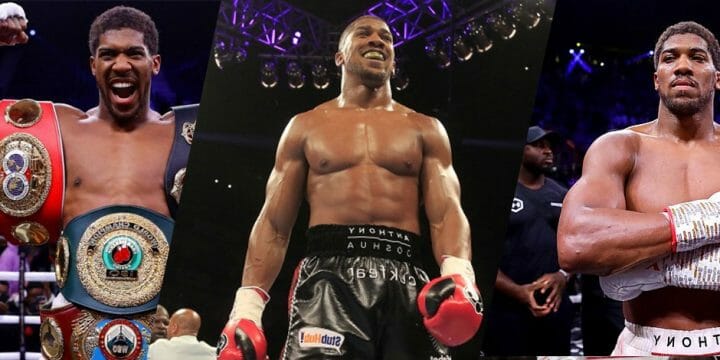I had an interesting combat sports discussion with two friends who wanted to learn a new fighting style and were considering boxing or karate.
As a personal trainer who's helped martial artists with weight training and strength building, I decided to sit down with some boxing and martial arts coaches to see how boxing and karate compared to each other and why you would pick one or the other.
It turns out there are some fascinating details to these two techniques.
Let's dive in.
Quick Summary
- Boxing and karate are two distinct combat sports with different histories and techniques.
- The rules in boxing are stricter, allowing only punches to the front of the upper body and face, while karate involves rapid punches and kicks with strict adherence to its rule book.
- According to BoxRec, boxing only involves punches to the front of the upper body and face (excluding the throat), and no other body part is allowed to make contact with opponents.
- Karate practitioners wear a gi and attack with bare feet, while boxers wear loose-fitting shorts, shoes, and gloves.
History Of Boxing

A boxing professional and coach told me that boxing dates back to the ancient Egyptians in 3,000 B.C. when it first appeared as a sport.
While there are not many details about techniques or the rules, it was described as a boxer facing an opponent and throwing punches and jabs.
Boxing continued making appearances throughout history in Roman times, but it really wasn’t until the Olympics introduced the first boxer in 1904 that the sport took off.
Since then, it has grown exponentially, with boxers fighting it out for millions of dollars in title fights.
Some call it the greatest show when it comes to a combination of punches, and the spectacle of a fight night is definitely an attraction.
History Of Karate
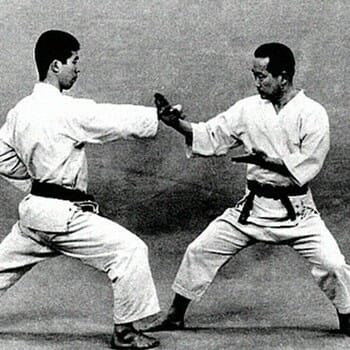
Karate dates back to the 7th century and the founding of Zen Buddhism under the lead of Daruma. Not only did he develop new martial arts techniques for fighting, but he also combined spiritual teachings.
It’s a sport of fast punches and powerful kicks, and a karate player (known as a karateka) is an artist when it comes to striking weak points of the human body.
In recent years, the popularity of karate has convinced the Olympic committee to introduce it as the third martial art.
Differences Between Karate & Boxing
It seems like an obvious question to address the difference between a boxer and a karate fighter.
But diving into details gave us some great insights.
1. Rules
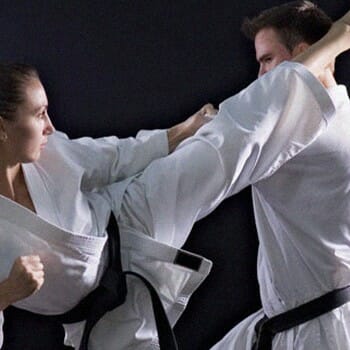
When you watch a competitive karate fight, you’ll notice that the behavior of each opponent is much more like a street fight, with punches and kicks flying at a rapid speed.
While it might look like there are hardly any rules, the karate rule book is very strict, and students pride themselves on the way they stick to them.
Boxing is a lot stricter in what an opponent is and isn’t allowed to do and how they can make contact with each other.
According to BoxRec, boxing only involves punches to the front of the upper body and face (excluding the throat), and no other body part is allowed to make contact with opponents [1].
It’s all down to what you can do with each hand and fist.
2. Techniques
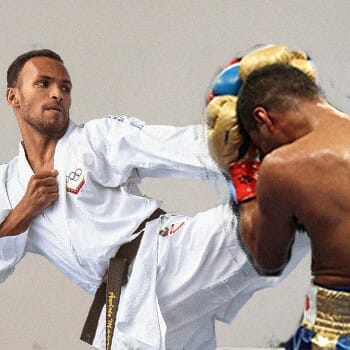
Karate is similar to Muay Thai in the techniques it uses, and the way training is more than just gaining experience in the physical side of it.
A karateka will become very skilled in self-defense techniques, including the delivery of a fast and powerful karate punch.
You’ll also see many a difference in styles of kicks that aim to hurt or throw an opponent off balance.
When you compare it to boxing punch techniques like hooks, jabs, and crosses, boxers are very limited in what they can do to overpower an opponent.
It’s a careful skill of landing a power punch and scoring points.
3. Clothing
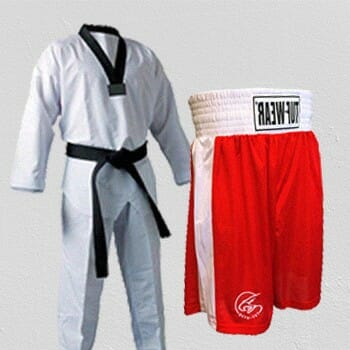
This is where the karate vs. boxing differences are most obvious.
In karate, each opponent wears a gi made up of trousers and a coat, with the size and length having many strict rules [2].
A karate fighter wears no gloves and attacks with bare feet, as well.
Boxers use loose-fitting shorts and shoes. And they obviously have a regulation size and weight for the use of gloves as well.
During training, you’ll also see people use headgear predominantly for sparring and lessen the impact of punches [3].
4. Training Equipment

Training for boxing punches involves a lot of work on a heavy bag which also trains people how each foot moves for defense and punching harder - the importance of footwork.
Boxers will also use speed bags to train strength and coordination, and other than that, there really is just the ring for sparring.
“Sparring offers fighters, from Boxing to MMA to Judo, an opportunity to test their skills against real live opponents. The experience of facing off against another human, even in a controlled setting, teaches you things that you can’t learn from hitting a bag.”
- Rinsside.com.
Unlike boxing, people train their karate punch either by punching in the air or another person with heavy body protection.
If you watch videos of karate classes, you’ll see students execute endless punching form routines with the goal of gaining strength and the perfect technique to better fight an opponent.
5. Competition
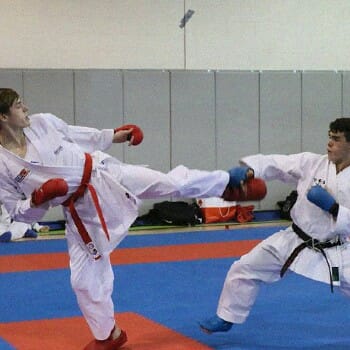
Boxers face one another in a ring, while karate follows most other martial arts by having an open mat with some boundary lines on them.
Both styles have amateur and professional competitions that go up to major international sporting events where opponents from all over the world compete.
Competitive fighting might not be everyone’s goal, but it is a great option to find out how your experience will do against an opponent.
It can also show you where you lack some skills in boxing or karate to focus more attention during training.
6. Martial Arts Schools And Gyms
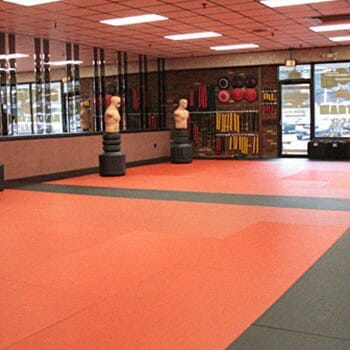
All major cities and towns will have a great variety of options when it comes to choosing a martial art or boxing school.
I’ve worked with more than one boxer who has told me that they love the old-school setting of a boxing gym with just a few weights and loads of well-worn heavy bags.
My personal experience has been that a karate school is a cleaner and often brighter environment.
Each has its individual characteristics and variables, and I suggest you visit each type to see it for yourself.
Choosing One For Personal Goals

I recommend avoiding falling for the trap of making a decision between karate and boxing based on a YouTube video or what some random person told you.
YouTube videos are often designed to put an emphasis on showing the best of a dojo or boxing gym, and they rarely account for your personal goals.
I’ve had some parents ask me for advice regarding picking a style for their kids. My answer is generally the same as I give my adult clients and comes down to these five factors.
1. Fitness
I’m going to risk saying something controversial in the karate vs. boxing debate.
The truth is that I’ve worked with both types of athletes, coaches, and instructors, and in my experience, boxers have higher levels of fitness.
A lot of that probably comes from the fact that they train to go up to 12 rounds means that they have to train their endurance levels.
In a karate dojo, the focus is much more on technique and proper form, with the competitive fight lasting nowhere near as long as in boxing.
If you want to get fit in one of these sports, then take advantage of what boxing has to offer.
Related: Best Martial Arts for Weight Loss
2. Self-Defense
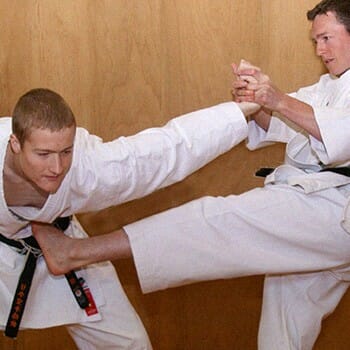
It’s hard to beat martial arts in a self-defense situation, and karate would be the better choice if this is a priority.
You’ll use a range of punching, kicking, and even some wrestling techniques to get someone to the ground.
A well-executed punch in karate can be everything you need to surprise a threatening person.
In boxing, there is a bit of a lack of that focus on disabling someone fast. It doesn’t mean that it’s not a great training tool for street fights, but you’ll probably have a better arsenal of skills from karate.
3. Competitions
If you really want to get into a competitive environment, then boxing will probably allow you to do that a lot sooner.
A martial art like karate takes much longer to learn compared to basic boxing moves. The latter also has more options when it comes to protective gear.
Both do a great job at making sure that only opponents of the same size and skill level ever get in contact in competitions, which avoids unfair and dangerous situations.
4. Training Style
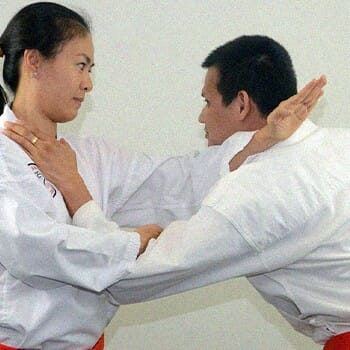
The karate training style is similar to Muay Thai, and they have similar backgrounds when it comes to style and form.
There’s a lot of repetitive work on getting each hand in the right position for offensive strikes and defensive moves.
Unlike a karate player, a boxer will mainly focus on punches and protection from the head and body shots.
You’ll also often find MMA fighters going to both types of schools to work directly on a specific style or skill.
5. Martial Art And Boxing Philosophy
The martial arts and boxing point is a lot more than just kicking and punching the head off an opponent.
Having worked with folks from both kinds of styles, I can tell you that they take their sports philosophy very seriously.
It’s as much about self-control and respect for others as it is about landing a punch or strikes to the head.
Coaches and instructors frown upon any of their students taking advantage of street fighting situations, and in many cases, it can be ground for being banned from the gym.
Related Articles:
FAQs
Can a Boxer Beat a Karate Fighter?
Yes, a boxer can beat a karate fighter, but it heavily depends on the situation. In the case of a street fight, you could argue that karatekas have the upper hand because a blow from a kick can be more powerful than punching alone.
Which Is Better for Self-Defense: Boxing or Karate?
Karate tends to be better for self-defense because it involves more techniques and forms than punching strikes. However, practitioners from both categories will often agree that the karate vs. boxing debate does come down to the type of confrontation rather than a clear matter of force and power.
Can You Do Boxing and Karate?
Yes, you can do boxing and karate in kickboxing. Both marital arts were combined to create what we today call kickboxing.
References:
- https://boxrec.com/media/index.php/Rules_of_Boxing
- https://www.wkf.net/karateprotections/karate-gi
- https://blog.ringside.com/boxing-sparring-training/
About The Author
You May Also Like




